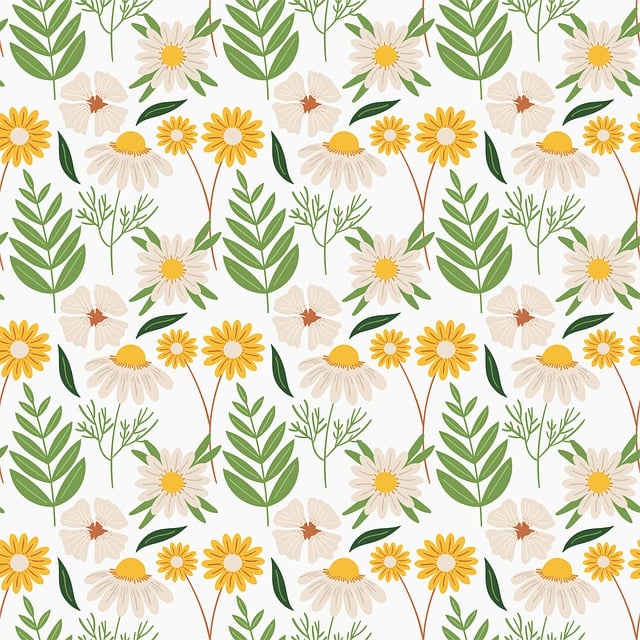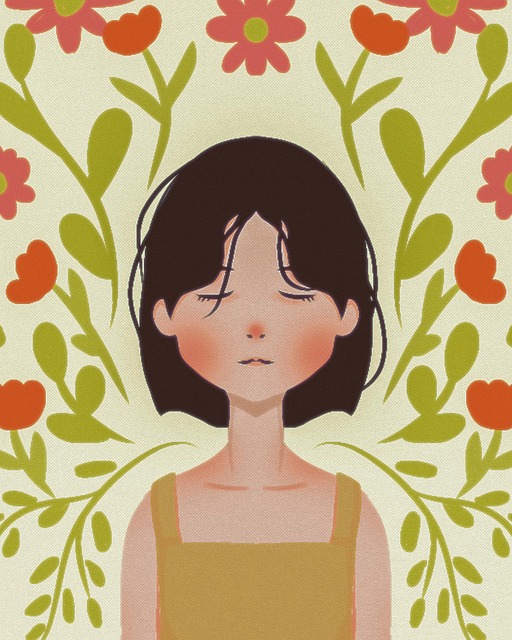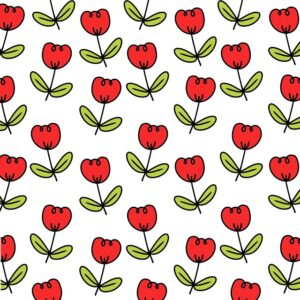Graphic design has evolved from traditional mediums to a fully digital landscape, leveraging advanced software, high-resolution displays, and internet accessibility. Modern solutions blend timeless principles with new technologies, emphasizing visual hierarchy, minimalism, and user experience (UX). Industry-standard platforms like Adobe Creative Suite, Sketch, and Figma have revolutionized collaboration and design processes. UX is crucial for creating visually appealing and functional interfaces, while branding and identity help convey brand essence and foster connections with customers. Typography trends vary from geometric boldness to custom designs, and color psychology influences viewer perception. Sustainability has emerged as a key focus, with designers incorporating eco-friendly practices into their work.
“Explore the dynamic landscape of modern graphic design, where traditional artistry meets digital innovation. This article delves into the transformative power of graphic design solutions, tracing its evolution from manual techniques to the cutting-edge digital age. Uncover core principles that define contemporary aesthetics, and discover how user experience (UX) and branding play pivotal roles in captivating audiences. From typography trends to color psychology, we explore tools and software revolutionizing the industry. Additionally, we examine sustainability’s profound impact on shaping eco-conscious graphic design practices.”
Evolution of Graphic Design: From Traditional to Digital Age

The evolution of graphic design mirrors the transformation of technology and society, with a remarkable shift from traditional to digital age. Historically, graphic design relied heavily on physical mediums like pen, paper, and canvas. Designers meticulously crafted each element, from hand-drawn sketches to carefully typed text and painted illustrations. This era emphasized craftsmanship, attention to detail, and the unique touch of the artist. With the advent of computers and digital technology, graphic design underwent a profound metamorphosis. Digital tools enabled designers to explore new dimensions, offering unparalleled creativity, efficiency, and flexibility. The digital age ushered in a world where designs could be swiftly created, edited, and shared globally, revolutionizing industries from print media to web development.
Today, graphic design leverages advanced software, high-resolution displays, and the boundless potential of the internet. Designers now have access to vast libraries of fonts, colors, and images, allowing for intricate visual storytelling. The digital landscape has not only expanded creative horizons but also democratized design, making it accessible to a broader range of individuals and businesses. As technology continues to advance, graphic designers must stay agile, embracing new tools and trends while honoring the fundamentals that have shaped their craft over centuries.
Core Principles of Modern Graphic Design

Modern Graphic Design Solutions are built upon a solid foundation of core principles that have evolved over time, adapting to new technologies and cultural shifts. At their heart, these solutions prioritize visual hierarchy, where designers use typography, color, and imagery to guide the viewer’s eye through a design, ensuring key information is emphasized and easily digestible. This principle is crucial for effective communication, whether in digital formats or traditional print media.
Another cornerstone is minimalism, reflecting a focus on simplicity and space. Successful modern graphic designs often strip away unnecessary elements, allowing core concepts to shine. This approach not only enhances visual appeal but also improves user experience by making information more accessible. In the digital age, where attention spans are shorter, these principles help create designs that capture and retain viewer interest quickly and effectively.
Tools and Software Transforming the Industry

The evolution of graphic design has been significantly shaped by the advent and continuous advancements in tools and software. Digital platforms have transformed the industry, providing designers with a vast array of options to bring their creative visions to life. From vector graphics and photo editing software to intricate layout programs, these tools offer unprecedented precision and flexibility. Designers can now seamlessly integrate various media, experiment with advanced effects, and create visually stunning compositions with ease.
Industry-standard software like Adobe Creative Suite, Sketch, and Figma has revolutionized the way graphic design is conceptualized and executed. These platforms facilitate collaboration, enabling remote teams to work on projects simultaneously. With cloud-based features, designers can access their files from anywhere, fostering a dynamic and efficient workflow. Moreover, these tools often include AI-powered functions, automating repetitive tasks and allowing designers to focus on the creative aspects of their work, ultimately elevating the overall quality of Graphic Design.
User Experience (UX) in Graphic Design: Creating Engaging Visuals

In modern graphic design, User Experience (UX) plays a pivotal role in creating visually engaging and user-friendly interfaces. It’s not just about aesthetics anymore; designers must consider how users interact with and navigate through visual content. By incorporating UX principles, graphic designers can craft layouts that are intuitive, accessible, and captivating. This involves understanding user behavior, information architecture, and interaction design to deliver visuals that meet user needs and expectations.
Effective UX in graphic design means creating visually appealing interfaces that guide users seamlessly. It involves balancing aesthetics with functionality, ensuring that each element serves a purpose. From website designs to marketing collateral, designers use typography, color theory, and composition to craft graphics that not only look stunning but also enhance the user journey. By prioritizing UX, graphic designers can create solutions that not only meet business goals but also provide users with a memorable and enjoyable experience.
Branding and Identity: Crafting Memorable Visual Narratives

In the realm of modern graphic design, branding and identity play a pivotal role in shaping memorable visual narratives. Skilled designers meticulously craft logo designs, color palettes, typography choices, and overall aesthetic elements that encapsulate a brand’s essence. These visual assets serve as the cornerstone of a company’s identity, instantly recognizable and distinguishable from competitors.
Through innovative Graphic Design techniques, professionals create compelling stories that resonate with audiences. By aligning design aesthetics with a brand’s mission and values, designers foster a deeper connection between the company and its customers. This strategic approach ensures that visual elements not only attract attention but also convey meaningful messages, leaving a lasting impression in today’s digital landscape.
Typography Trends Shaping Contemporary Designs

In the realm of modern graphic design, typography plays a pivotal role in shaping contemporary aesthetics and communication. Current trends showcase a diverse range of styles, from bold geometric fonts to intricate hand-drawn letters. Designers are experimenting with various typographic techniques to create visually appealing layouts that capture audiences’ attention. The choice of typefaces has evolved, incorporating both classic and modern options to suit different brand identities and design projects.
One notable trend is the integration of custom typography, where designers craft unique fonts tailored to specific client needs. This approach adds a personal touch and enhances brand recognition. Additionally, the rise of variable fonts offers designers flexibility in creating dynamic typographic hierarchies, ensuring optimal legibility across various screen sizes and devices, a crucial aspect in today’s digital graphic design solutions.
Incorporating Color Psychology for Impactful Visuals

In modern graphic design, understanding color psychology is essential for creating impactful visuals. Different colors evoke distinct emotions and associations, making them powerful tools to engage audiences. For example, warm hues like red and orange often stimulate appetite and create a sense of energy, while cool tones such as blue and green are associated with calmness and tranquility. By strategically choosing color palettes, designers can influence how viewers perceive a brand or message.
This psychological aspect allows graphic design to go beyond aesthetics, tapping into the subconscious mind. Incorporating color theory in design solutions ensures that visuals not only look appealing but also resonate with the intended audience on a deeper level. It’s a key strategy for capturing attention and fostering emotional connections, ultimately enhancing the overall impact of any marketing or communication piece.
Sustainability and Its Influence on Graphic Design Practices

In recent years, sustainability has emerged as a powerful driver in shaping graphic design practices. As environmental consciousness grows, designers are increasingly incorporating eco-friendly principles into their work, ensuring that their creative processes and end products have a reduced ecological footprint. This shift is evident in the exploration of recyclable materials, digital printing technologies that minimize waste, and innovative techniques to extend the lifespan of designs. By embracing sustainability, graphic design not only contributes to a greener planet but also opens up new avenues for creativity, with designers finding unique ways to communicate messages while preserving resources.
The influence of sustainability on graphic design is profound, prompting a reevaluation of traditional practices. Designers are now encouraged to think holistically about their work, considering the entire lifecycle of a design, from concept to disposal. This includes using sustainable branding elements, promoting recycling and upcycling, and educating audiences about environmental issues through visually appealing and impactful designs. As consumers become more environmentally aware, graphic designers play a pivotal role in communicating sustainability stories effectively, fostering a culture of responsibility and appreciation for nature within the creative industry.
